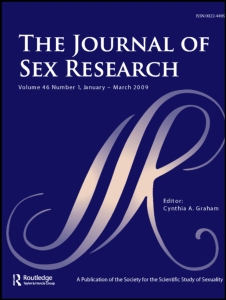Masculinity and same-sex relationship agreements: why is this a public health issue?
 My master’s thesis in public health explored the ways in which normative expectations of masculinity may underlie patterns of social behavior observed in gay, bisexual, and other men who have sex with men that increase the risk of HIV transmission. One objective of this endeavor was to investigate the association between normative standards of masculinity and a tendency to form nonmongamous sexual agreements in male same-sex relationships. As my coauthor (Elizabeth Pathak) and I reported in the Journal of Sex Research, our results indicated that men who reported high endorsement of normative masculinity were more likely to be in nonmonogamous relationships. Furthermore, high endorsement of normative masculinity was predictive of relationship agreements characterized as the most sexually permissive. These findings indicate that rather than simply predicting nonmonogamy in gay male couples, attitudes toward masculinity may be indirectly related to increased risk of STIs by influencing the types of sexual agreements negotiated.
My master’s thesis in public health explored the ways in which normative expectations of masculinity may underlie patterns of social behavior observed in gay, bisexual, and other men who have sex with men that increase the risk of HIV transmission. One objective of this endeavor was to investigate the association between normative standards of masculinity and a tendency to form nonmongamous sexual agreements in male same-sex relationships. As my coauthor (Elizabeth Pathak) and I reported in the Journal of Sex Research, our results indicated that men who reported high endorsement of normative masculinity were more likely to be in nonmonogamous relationships. Furthermore, high endorsement of normative masculinity was predictive of relationship agreements characterized as the most sexually permissive. These findings indicate that rather than simply predicting nonmonogamy in gay male couples, attitudes toward masculinity may be indirectly related to increased risk of STIs by influencing the types of sexual agreements negotiated.
It was our hope that these findings would bring further attention to sociocultural aspects of sexual behaviors that increase the risk of HIV, and to view “high risk behaviors” as social practices embedded in existing social structures. To this end, we argue that normative masculinity represents dominant cultural standards and expectations of male behavior. In turn, individuals within their ascribed gender role act upon these normative expectations. Therefore, men who express more positive attitudes towards these cultural expectations would tend to construct dominant or hegemonic gender roles. They may for instance, place less value on intimate relationships and instead emphasize the number and frequency of sexual encounters. According to this line of reasoning, when gay men enter into relationships, a conflict arises between their simultaneous roles as men and intimate partners. Norms associated with masculinity—characterized by independence, sexual prowess, aggression and lack of emotionality—conflict with expectations of romantic love, intimacy and interdependence that typify modern heterosexual relationships. What differentiates this conflict between heterosexual and homosexual relationships are factors such as family support, religious ideology, and civil marriage that sustain and support heterosexual intimacy and deny homosexual intimacy. Sexual expectations within gay relationships are therefore less constrained by sexual monogamy, which structures relations among heterosexual couples. As a result, normative masculinity may exert a stronger influence among gay couples, explaining some of the variation in relationship agreements. It will be interesting to see how institutional changes (i.e., same-sex marriage) impact current sexual practices among male same-sex couples.